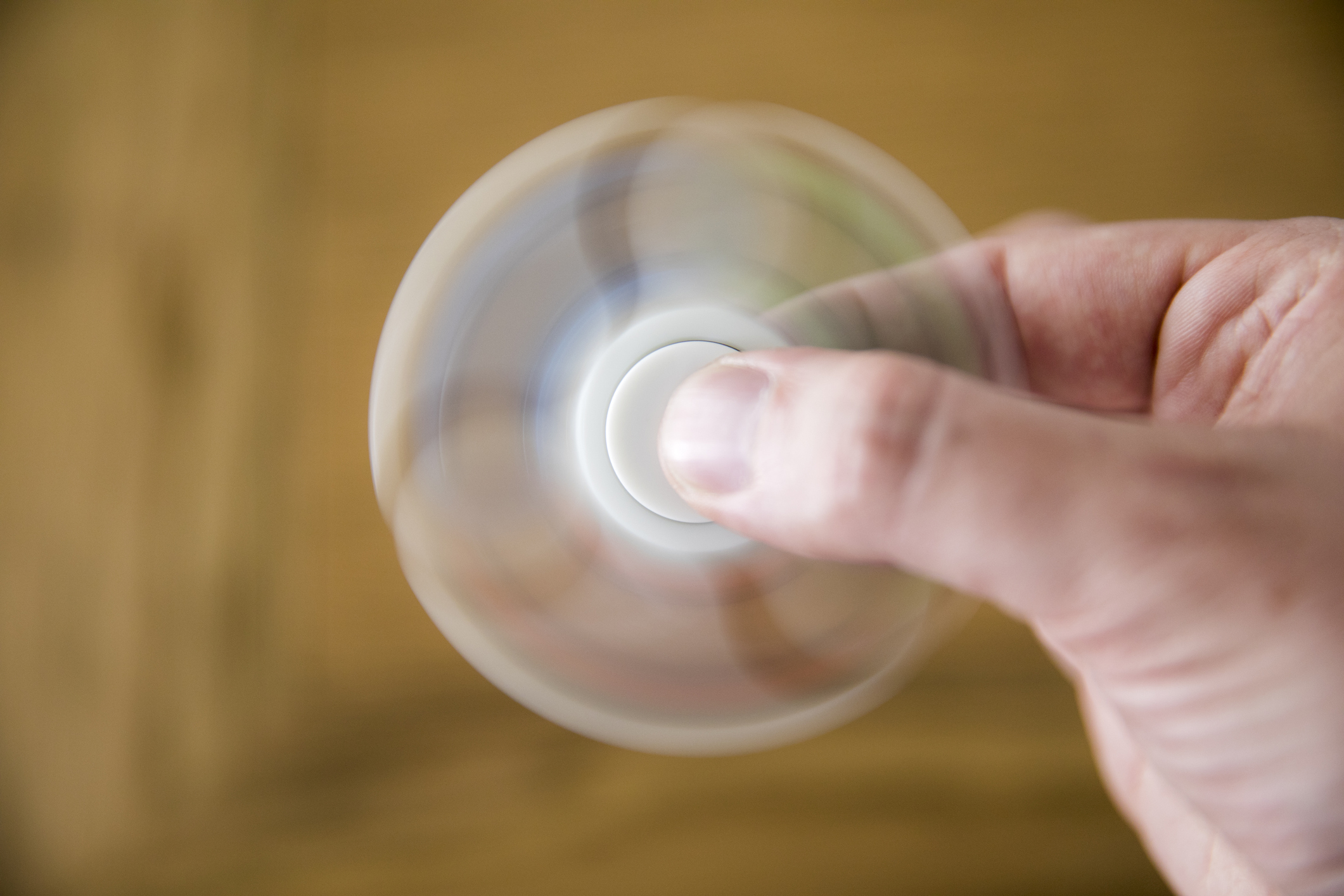
Fidget spinners are everywhere. Initially marketed as a sensory toy, the hand-held gadget experienced a wild surge in popularity and, within days, became a must-have for every child and teenager across the county.
The basic fidget spinner is built with three prongs centered around a circle. Flick a prong, and the triangle shape spins, almost like a ceiling fan.
The toys don’t do anything too exciting, and yet the fidget spinner and its cousin, the fidget cube, now dominate 49 of the top 50 rankings on Amazon.
It’s not just kids who love the toys: fidget spinners are showing up in college classrooms, on commuter trains and at the workplace.
Here’s what you’ll want to know about the latest fad:
1.) No scientific backing
Fidget spinners have been marketed as a stress-reliever and a self-care tool for ADHD and autism. It’s important to note, though, that there has been no scientific evidence backing this claim. While some might find that the toys provide temporary relief from symptoms, fidget spinners should never be used in place of therapy or medication.
2.) Choose cheaply
One of the biggest selling factors of this fad is the modest price tag – most cost just a few dollars. Like every popular fad, though, opportunists have been quick to cash in on the craze. The market boasts luxury spinners that come with a price tag of a few hundred dollars or more.
Kids love the cheaper versions, and they fulfill the purpose perfectly. Don’t shell out big bucks, because this fad may be over in a few weeks. By then, your child may never look at a spinner again.
3.) Classroom chaos
A lone spinner produces a low, almost indistinct whir. Multiply that by 25, though, and you’ve got quite a racket. Now imagine trying to teach over that din. Some teachers have found fidget spinners to be too distracting, and many schools have banned them completely. Other teachers don’t mind the noise, though, and claim they help with concentration. Regardless, make sure your child’s teacher is OK with the fidget spinner being used in the classroom before sending it to school.
4.) Smartphone substitute
Many posit that the fidget spinner’s popularity is linked to its vibrating motion, which mimics that of a smartphone. They theorize that the toy serves as a salve for the smartphone-addicted child. Whether this is true or not remains to be proven. But if it’s a choice between a phone and a fidget spinner, remember that the toy won’t mess with your child’s attention span or internal clock the way screen time does, making it the better choice.
Here to stay, or gone tomorrow? It’s anyone’s guess. Meanwhile, though, make smart, informed choices about the latest toy fad.